Well, I have the following circuit:

simulate this circuit – Schematic created using CircuitLab
When the switch is closed for a long time, the current that is flowing trough the resistor \$R_1\$ and the coil is given by:
$$\text{I}_\infty=\frac{\text{V}}{\text{R}_1}=\frac{10}{100}=\frac{1}{10}\tag1$$
With that given I can solve what happens when I open the switch. The current trough the coil will stay in the same direction as when the switch is closed. Now, at the moment when I open the switch the voltage across the coil \$\text{V}_{\text{Y}_1}\$, is given as:
$$\text{V}_{\text{Y}_1}=-\text{V}\cdot\frac{\text{R}_1+\text{R}_2}{\text{R}_1}\cdot\exp\left(-\frac{\text{R}_1+\text{R}_2}{\text{L}}\cdot t\right)\tag2$$
So, the voltage over the coil will start (when I open the switch) at \$-\text{V}\cdot\frac{\text{R}_1+\text{R}_2}{\text{R}_1}=-10\cdot\frac{100+100}{100}=-20 V\$, which is (absolutely seen) higher than the supply voltage. How is that possible? Or is the formula \$(2)\$ wrong?